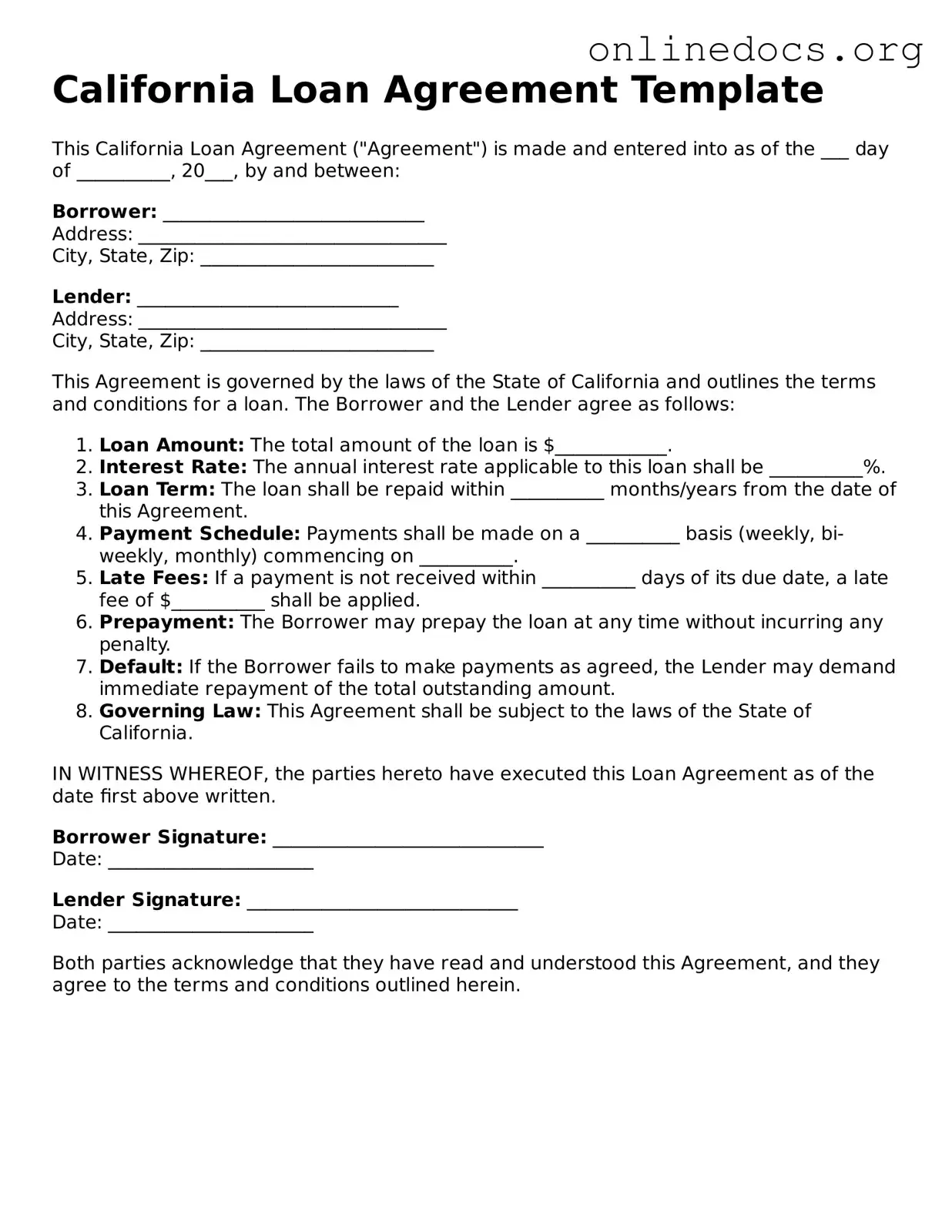The California Promissory Note is closely related to the Loan Agreement. It serves as a written promise from the borrower to repay a specified amount to the lender, detailing the terms of the loan, including interest rates and repayment schedules. While a Loan Agreement outlines the broader terms and conditions of the loan, the Promissory Note focuses specifically on the borrower's commitment to repay the borrowed funds.
An Employee Handbook is crucial for ensuring clarity within the workplace, offering vital insights on company policies and employee obligations. It serves as a central reference point, helping employees navigate their roles effectively while fostering a cohesive work culture. For those looking to create or update their handbooks, resources like legalformspdf.com can provide valuable templates and guidance.
The Secured Loan Agreement is another document that shares similarities with the California Loan Agreement. This type of agreement includes collateral to secure the loan, providing the lender with a form of protection. If the borrower defaults, the lender can claim the collateral. Like the Loan Agreement, it details the terms of the loan but adds the layer of security through the collateral requirement.
A Mortgage Agreement also bears resemblance to the California Loan Agreement. This document is specifically used when real estate is involved. It outlines the terms under which a borrower receives funds to purchase property, with the property itself serving as collateral. Both agreements detail the repayment terms, but the Mortgage Agreement includes additional provisions related to property ownership and rights.
The Business Loan Agreement is similar in that it governs loans made to businesses rather than individuals. This document outlines the terms of the loan, including the purpose of the funds, repayment schedules, and any conditions that the business must meet. While both agreements serve the same fundamental purpose, the Business Loan Agreement often includes specific provisions related to the business's financial health and operational requirements.
An Equipment Financing Agreement is akin to the California Loan Agreement, particularly when the loan is used to purchase equipment. This document specifies the terms under which a borrower can acquire equipment through financing. It includes details on payment terms, interest rates, and the rights of both parties regarding the equipment, paralleling the structure of a Loan Agreement.
The Personal Loan Agreement is another document that is similar in nature. This agreement is used for loans made to individuals for personal use, such as debt consolidation or home improvement. It outlines the terms of the loan, including repayment schedules and interest rates, much like the California Loan Agreement, but is typically less formal and may not require collateral.
A Line of Credit Agreement shares characteristics with the Loan Agreement as well. This document allows borrowers to access funds up to a specified limit, providing flexibility in borrowing. It details the terms under which the borrower can draw funds, including interest rates and repayment terms. Both agreements serve to establish the financial relationship between borrower and lender, but a Line of Credit Agreement allows for ongoing borrowing rather than a one-time loan.
The Student Loan Agreement is also similar, as it governs loans taken out for educational expenses. This agreement outlines the terms of the loan, including interest rates, repayment schedules, and any deferment options. While it serves a specific purpose, the structure and function align closely with those of the California Loan Agreement.
A Lease Agreement can be compared to the California Loan Agreement in the context of financing a property. While it primarily governs the rental of property, it often includes terms regarding payments and obligations similar to those found in a Loan Agreement. Both documents establish a financial arrangement between parties, though one focuses on ownership and the other on tenancy.
Finally, a Debt Settlement Agreement shares some similarities with the California Loan Agreement. While it typically arises from a borrower’s inability to repay a loan, it outlines the terms under which a creditor agrees to accept a reduced payment to settle the debt. Both agreements involve negotiations and terms that dictate the financial obligations of the parties involved, though they arise from different circumstances.
